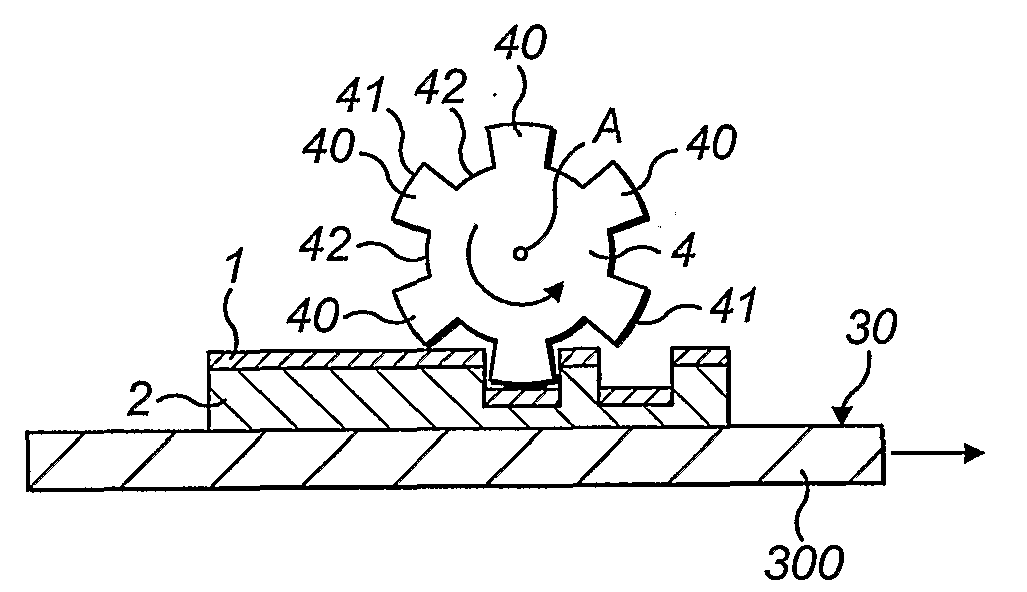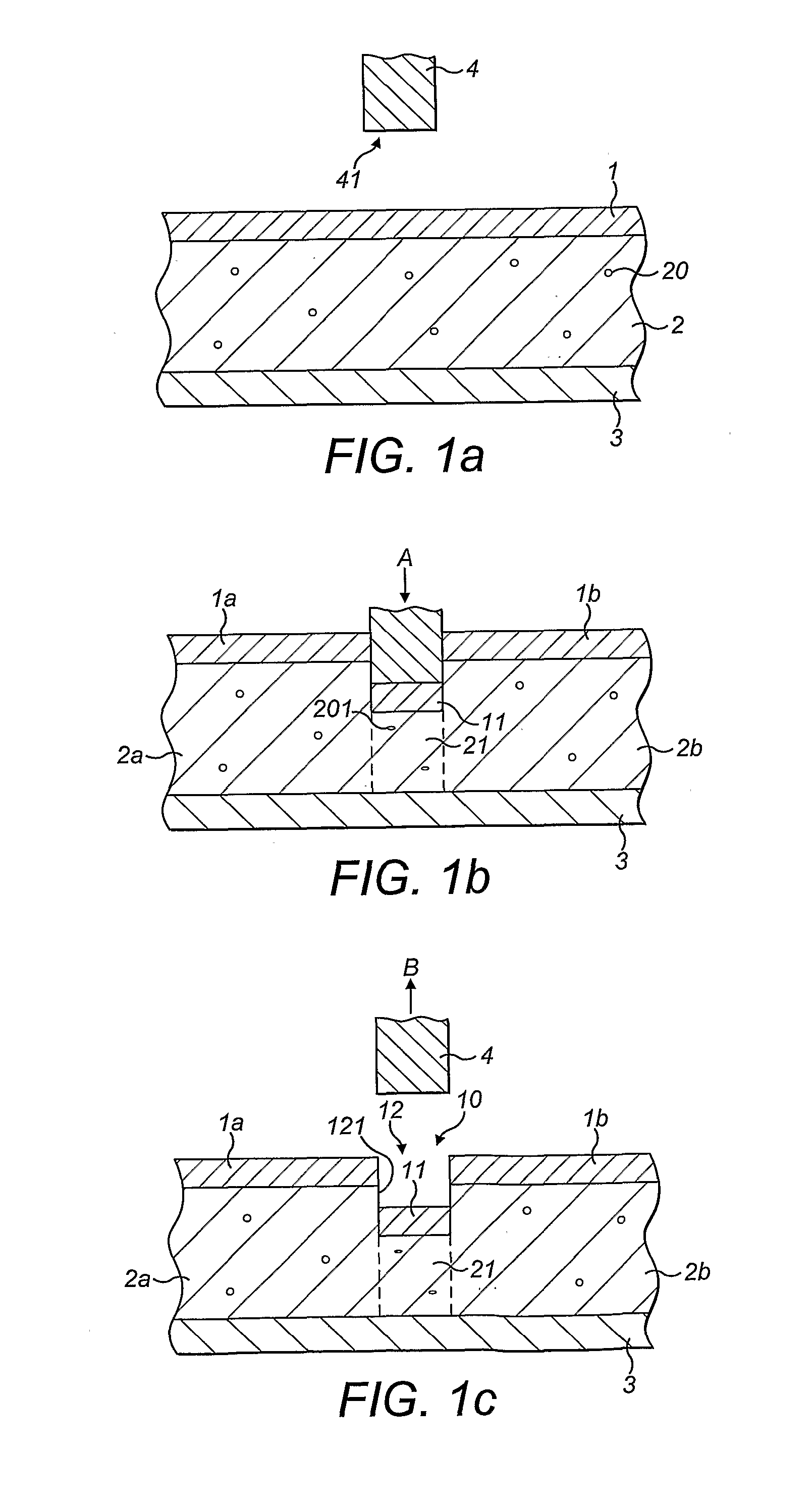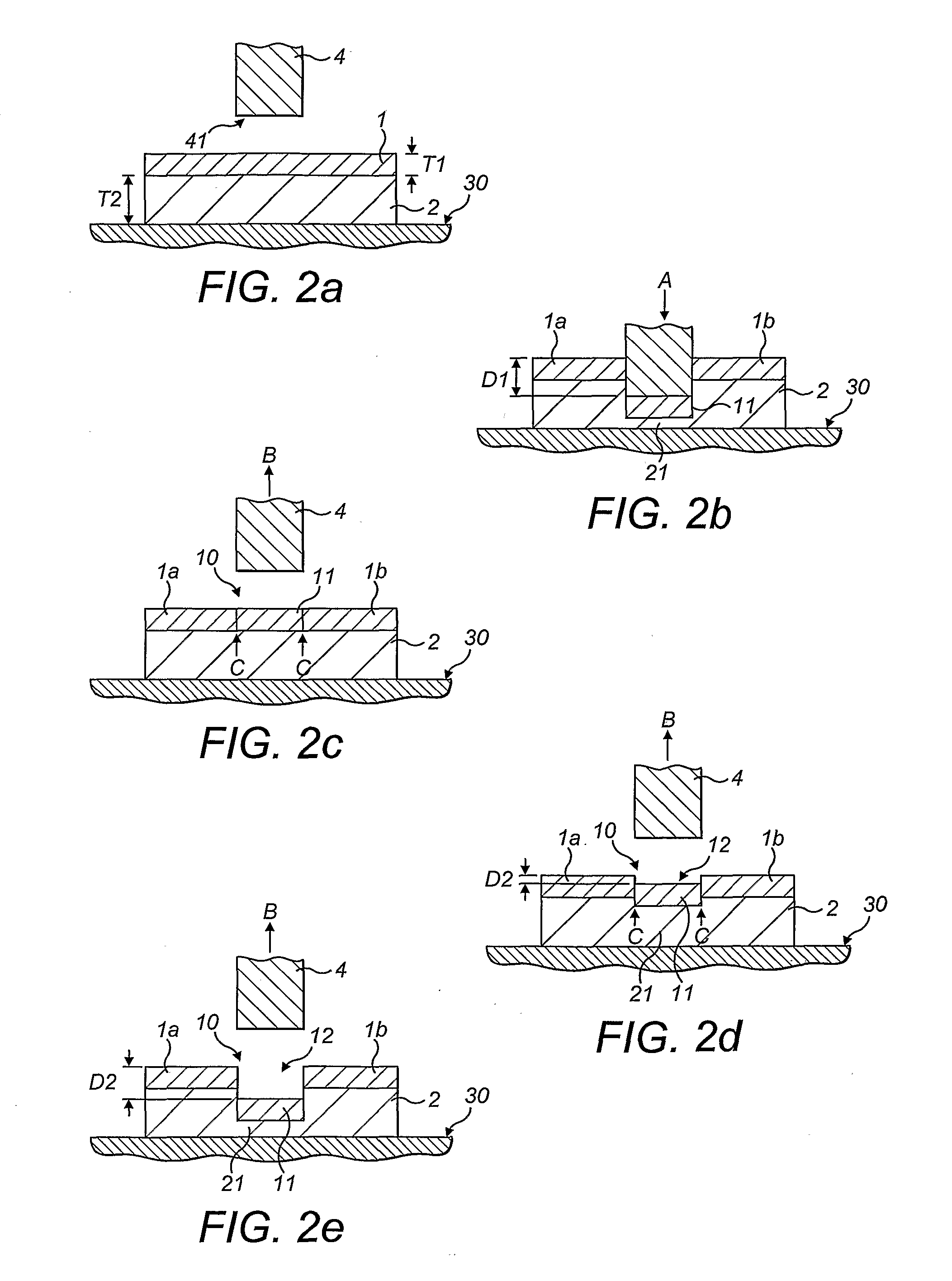Electronic devices, circuits and their manufacture
a technology of electronic devices and circuits, applied in the field of electronic devices and electronic circuits, can solve the problems of increasing the total manufacturing time, undetectable distortion of the upper layer of semiconductive materials, undesirable removal of semiconductive materials, etc., and achieves the improvement of minimising any smearing or transfer of materials, and improving the cleanness of the aperture edges
- Summary
- Abstract
- Description
- Claims
- Application Information
AI Technical Summary
Benefits of technology
Problems solved by technology
Method used
Image
Examples
Embodiment Construction
[0217]Referring now to FIGS. 1a-1c, in a first method embodying the invention a layer of semiconductive material 1 is provided, supported by a layer 2 of insulative and compressible material.
[0218]The insulative layer 2 is itself supported by an underlying substrate layer 3, in this example formed of substantially non-compressible material. The semiconductive layer 1, compressible layer 2, and substrate or backing layer 3 can together be described as forming a multi-layer device substrate. It will be appreciated that a wide variety of techniques known in the art may be used to fabricate such a multi-layer structure, and embodiments of the invention may utilise any suitable such techniques, for example techniques selected to suit the particular material or materials of each layer. In certain embodiments, for example, the semiconductive layer 1 is a layer of organic semiconductive material, which may be formed over the compressible layer by spin-coating. In this first example, the mat...
PUM
| Property | Measurement | Unit |
|---|---|---|
| width | aaaaa | aaaaa |
| width | aaaaa | aaaaa |
| width | aaaaa | aaaaa |
Abstract
Description
Claims
Application Information
 Login to View More
Login to View More - R&D
- Intellectual Property
- Life Sciences
- Materials
- Tech Scout
- Unparalleled Data Quality
- Higher Quality Content
- 60% Fewer Hallucinations
Browse by: Latest US Patents, China's latest patents, Technical Efficacy Thesaurus, Application Domain, Technology Topic, Popular Technical Reports.
© 2025 PatSnap. All rights reserved.Legal|Privacy policy|Modern Slavery Act Transparency Statement|Sitemap|About US| Contact US: help@patsnap.com



